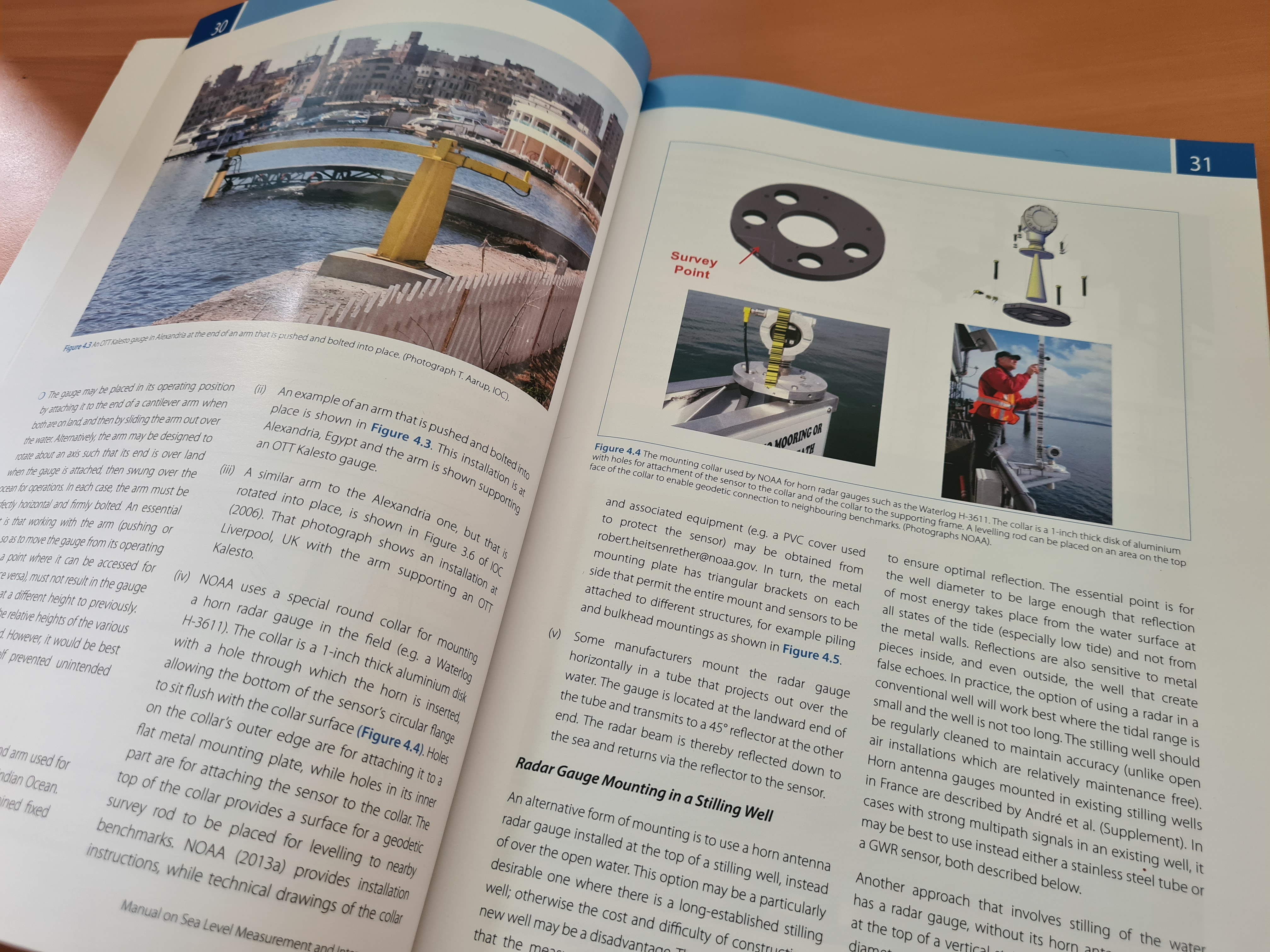
Filtrer les publications
Climate-scale changes of the semidiurnal tide over the North Atlantic coasts from 1846 to 2018
We investigated the long-term changes of the principal tidal component M₂ over the North Atlantic coasts, from 1846 to 2018. We analysed 9 tide gauges with time series starting no later than 1920. The longest is Brest with 165 years of observations. We carefully processed the data, particularly to remove the 18.6-year nodal modulation. We found that M₂ variations are consistent at all the stations in the North East Atlantic (Newlyn, Brest, Cuxhaven), whereas some discrepancies appear in the North West Atlantic.
L. Pineau Guillou, P. Lazure, G. Wöppelmann
Ocean Science
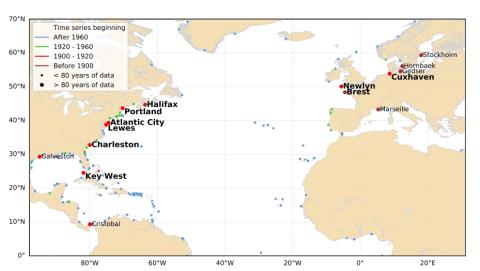
Quality control of in situ sea level observations: a review and progress towards automated quality control - Volume 1
The Global Sea-Level Observing System (GLOSS, https://www.gloss-sealevel.org/) is an international programme conducted under the auspices of the Intergovernmental Oceanographic Commission (IOC)of UNESCO. GLOSS aims at the establishment of high quality global and regional sea level networks for application to climate, oceanographic and coastal sea level research. The programme became known as GLOSS as it provides data for deriving the 'Global Level of the Sea Surface'.
Commission océanographique intergouvernementale
UNESCO
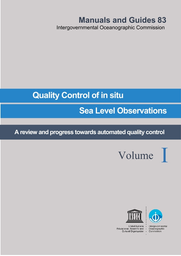
On the use of long term observation of water level and temperature along the shore for a better understanding of the dynamics: Example of Toulon area, France
A dense network of instruments has been deployed within harbors along the Mediterranean coast, in the Toulon Metropole area, between the Hyères islands and the Sanary Bay in the framework of the observation network HTM-NET. Each station is equipped with two piezometric sensors, the first immersed and the second emerged, which allows the calculation of the water level. Both piezometric sensors are also equipped with a temperature sensor. Water level and temperature data are analyzed and discussed, also considering meteorological data provided by Météo-France stations.
V. Rey, C. Dufresne, J.-L. Fuda, D. Mallarino, T. Missamou, C. Paugam, G. Rougier, I. Taupier-Letage
Ocean Dynamics, volume 70
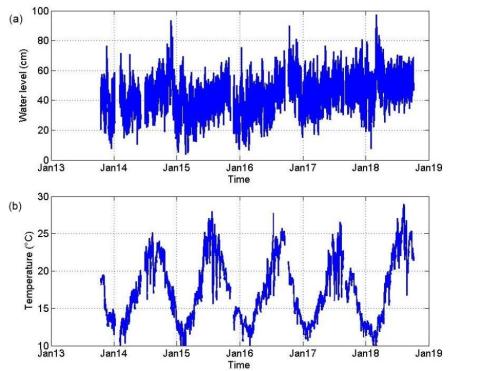
The Seasonal Cycle of Mean Sea Level in the North East Atlantic Ocean
The analysis of long-term tide gauge data collected in the Northeast Atlantic Ocean reveals that the seasonal cycle of mean sea level (hereafter MSL) exhibits amplitudes of up to 0.4 m. The position of MSL is of fundamental importance for many issues such as storm-induced flooding or the morphodynamics of shallow inlets, yet the underlying mechanisms are not fully understood. We characterize the seasonal cycle based on field observations complemented with a numerical hindcast.
M. Payo-Payo, X. Bertin
Journal of Coastal Research, volume 95
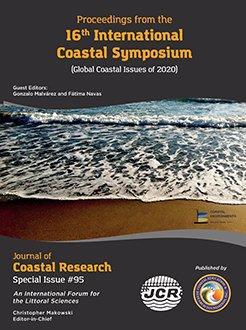
Assessing the Role of Storm Waves and River Discharge on Sediment Bypassing Mechanisms at the Têt River Mouth in the Mediterranean (Southeast France)
River mouths along sandy coastlines are influenced by alongshore transport of littoral sands and the interaction of hydrodynamics processes at the river mouth. These interaction are responsible for opening/closure of river outlets and subsequent episodes of sand bypassing by spitbreaching. Here, we study these mechanisms of alongshore sediment bypassing at a river mouth along the French Mediterranean coast. Over the last 6 years, bypassing processes were found to be associated with spit elongation and spit breaching.
Y. Balouin, F. Bourrin, F. Meslard, E. Palvadeau, N. Robin
Journal of Coastal research, volume 95

Intertidal topography mapping using the waterline method from Sentinel-1 & -2 images: The examples of Arcachon and Veys Bays in France
Intertidal flats lying as a buffer zone between land and sea provide critical services including protection against storm surges and coastal flooding. These environments are characterized by a continuous redistribution of sediment and changes in topography. Sea level rise, anthropogenic pressures, and their related stressors have a considerable impact on these areas and are expected to put them under more stress; hence the increased need for frequent and updated topography maps.
E. Salameh, F. Frappart, I. Turki, B. Laignel
ISPRS Journal of Photogrammetry and Remote Sensing, volume 163
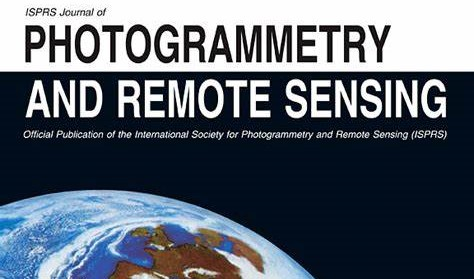
Coherent superposition of multi-GNSS wavelet analysis periodogram for sea-level retrieval in GNSS multipath reflectometry
The multipath signals of GNSS can act as a tide gauge via a technology called Global Navigation Satellite Systems multipath reflectometry (GNSS-MR), which is based on the relationship between multipath frequency and height to sea surface. In addition to the traditional frequency extraction method of Lomb–Scargle periodogram (LSP), wavelet analysis can be applied to extract instantaneous multipath frequencies of GPS L1, thus improving data utilization.
X. Wang, X. He, Q. Zhang
Advances in Space Research, volume 65

Characterization of Sea-level Variations Along the Metropolitan Coasts of France: Waves, Tides, Storm Surges and Long-term Changes
With 5853 km of coastlines facing the North Sea, the English Channel, the Atlantic Ocean and the Mediterranean Sea, France displays littoral zones exposed to a wide spectrum of wave climates, tidal ranges and storm surges. This study aims at characterizing in a systematic way sea level variations along the coasts of France. Wave climates are first characterized using state-of-the-art high resolution hindcasts validated against available observations from the national network CANDHIS.
G. Dodet, X. Bertin, F. Bouchette, M. Gravelle, L. Testut, G. Wöppelmann
Journal of Coastal Research, volume 88
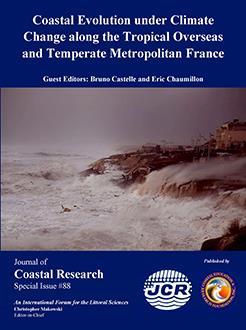
Decadal-scale Dynamics and Morphological Evolution of Mangroves and Beaches in a Reef-lagoon Complex, Mayotte Island
Mayotte Island is characterized by a vast coral reef-lagoon complex comprising significant mangrove development and numerous pocket beaches nested between volcanic headlands. Since 2005, field experiments involving topographic surveys, observations and hydrodynamic measurements have been coupled with the analysis of aerial photographs (1950-2016) in order to improve understanding of the morphodynamic interactions between mangroves, beaches and the coral reefs.
M. Jeanson, F. Dolique, E. J. Anthony, A. Aubry
Journal of Coastal Research, volume 88
